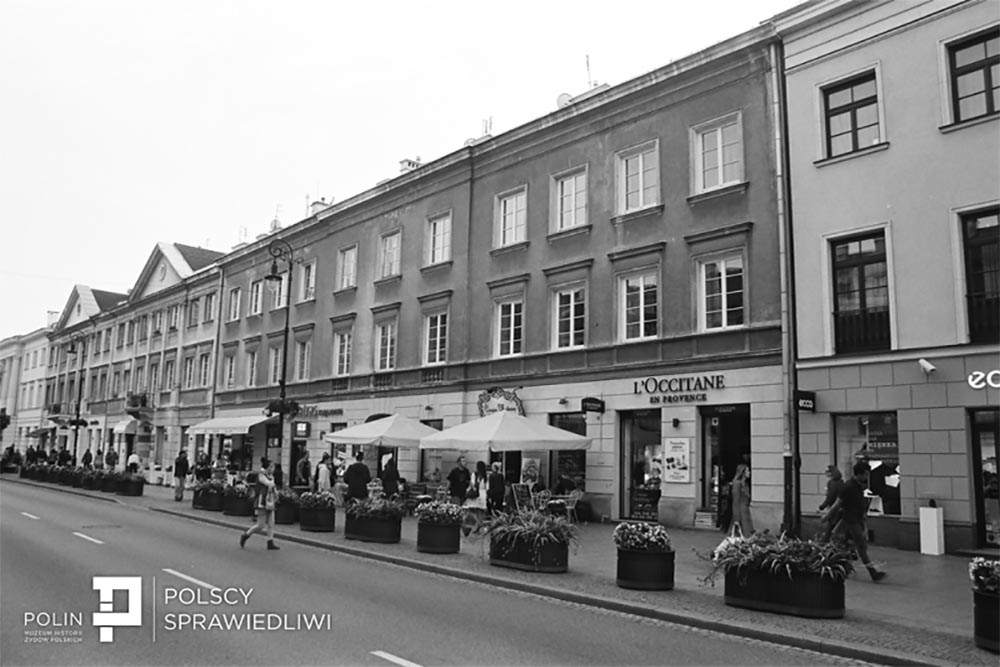Bank of Portraits / Wnuk Marian

Marian Wnuk
Marian, born in 1906 in the Polish town of Przedbórz, was one of the six sons of Yan and Leokadia Wnuk. From the young age, the boy had the talent of modelling. That defined his further art education and the profession of sculptor. After graduation from the Warsaw Arts Academy in 1933, Marian moved to Lviv and worked in the Fine Arts Institute in the following decade.
After the Nazi occupation of the city, together with his wife Juzefa, he joined the assistance to the Jews from the artistic sphere. Many of his fellow sculptors had got into the ghetto by the end of the year. In 1943, the Lviv residence of the Wnuk couple became the site of activity of the Żegota, the Council to Assist the Jews, acting on behalf of the Polish government in exile.
“The good conditions of our residence, where we had exit to the roof from the attic, let us establish the contact point of Żegota. From the Warsaw staff, Marek Arczyński, Eva Wonsovic and Przemysław Ogrodziński came to us. They brought different documents, sent from London, and established the Lviv branch of Żegota. Each of us had one’s own role. Initially, my task was to prepare the documents, first for the Jewish compatriots, who could face the raids and searches at any moment. Therefore, Nacht became Samborski, Streng – Vlodarski, German – Chermak, many others of us also searched the real records in the parishes and prepared the biographies. Marian looked for the proper flats around Lviv, explored the neighborhoods and together with Stashek Teiser set contacts with the different parishes, where Stashek painted the churches before the war, in order to find shelter for children in the families who agreed. The Council issued costs for this. Przemysław Ogrodziński, who was an accountant, brought the costs, and we hid them in the box in the attic. Marian and Stashek also went to the ghetto to see their pre-war friends and their families…”. From the memories of Yuzefa Wnuk.
Among the saved Jewish colleagues were Janusz and Jadwiga Strzalezki, and Maria Jarokhowska, for whom the escape from the ghetto was organized, the artists Jonasz Stern and Artur Nacht. Jonasz, dressed in the Hutsul costume, was sent to Romania. Artur was hid on the outskirts of Warsaw under the name of Stefan Samborski, and in 1956, he officially changed his name to Stefan Artur Nacht-Samborski.
The occupiers learned about the activity of the Lviv branch of Żegota from the denunciation approximately a year later. The Wnuk family had to leave Lviv.
“The disaster happened to us in the May of 1944. We received an order to leave the flat immediately and hide, as our address was discovered…”. From the memories of Juzefa Wnuk
The couple continued its selfless activities in Warsaw, joining the Council to Assist the Jews. Soon after that, Marian got under the raid and was deported to Germany as a forced laborer. He returned in June 1945.
After the war, Marian and Juzefa settled in Gdansk. Then they moved to Warsaw, where Marian worked as a rector of the Arts Academy. He died in 1967.
In 2019, the Yad Vashem recognized Marian Wnuk as the Righteous among the Nations.
Svitlana Demchenko
Kyiv
National Museum of the History of Ukraine in the Second World War
-
fingerprintArtefacts
-
theatersVideo
-
subjectLibrary



